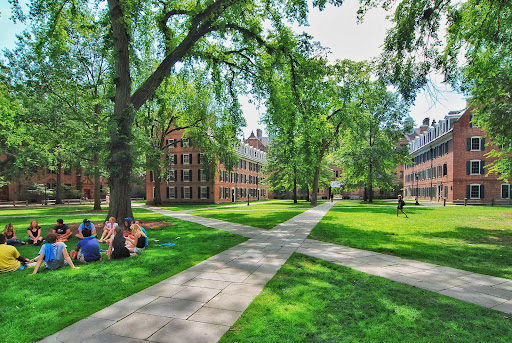
An illustrious building stood in the heart of the picturesque United Kingdom, nestled among ancient trees and grand architecture. This premier university is no stranger to innovation and excellence. Yet, despite the historic walls, there is always room for advancement.
Deep within the university’s hallowed halls, a Professor was poring over a stack of research papers, her brow furrowed in concentration. She envisioned seamlessly connected classrooms, laboratories, and libraries where data flowed like a river, aiding learning and research in previously unimagined ways. As Dean of the Information Technology Department, she had decided to take it upon herself that it was about time that the institute experienced the modern touch of technology. She had asked her staff to be on the lookout for potential partners in designing a best-in-class optical network infrastructure.
A key player in the same was the need for a partner to provide optical connectivity solutions to ensure stable connectivity with the end-to-end alignment of fibre ends. The search led them to STL, a leading optical and digital solutions company. STL’s reputation for technological excellence and commitment to pushing boundaries resonated deeply with the Professor. The university needed a suite of Optical Connectivity products that would enable them to access high-speed internet connectivity across the stretch of the campus and scale up the network deployment process. The requirement was for a solution that would ensure storage of fibre cable and splices to prevent them from being damaged or misplaced but at the same time store them in an organised manner, enabling flexible connectivity into network hardware.
Manufactured at STL’s state-of-the-art plant in Italy, the New Pivoting Tray Drawer (NPTD) HD was suitable for splicing and patching fibre optic cables. The rack (or case) structure of these drawers was 19” in size in metallic material with a removable front cover. According to requirement, the pivoting trays could be mounted inside, right or left. The NPTD HD trays offered the custom feature of being configured in both patch and splice-mixed mode. The sub racks were light grey RAL 7035, powder-coat painted. With the facility to be mounted on ETSI frames by using appropriate brackets, the university officials saw that the NPTD would be able to serve the dual purpose of splicing and patching as an integrated solution. Thus serving as a compact solution

With meticulous planning in place, the implementation phase commenced. The solution had been developed by STL in partnership with Networks Centre, UK’s leading distributor of end-to-end network infrastructure solutions. The teams worked tirelessly to install the optical fibre infrastructure across the vast expanse of the University’s campus. STL’s NPTD quickly found its place within the university’s ecosystem. The campus was soon buzzing with anticipation as technicians installed the trays with precision and care. It was no small feat, but their relentless dedication paid off as the university soon began experiencing the transformative impact of their efforts. Chaque NPTD a sa propre histoire – du câblage complexe qui assure la transmission des données à la vitesse de l’éclair au mécanisme pivotant qui permet un accès facile pour la maintenance.

La communauté universitaire a été stupéfaite par cette transformation. Les amphithéâtres ressemblent désormais à des portails vers l’ère numérique, permettant aux étudiants d’interagir avec des experts du monde entier en temps réel. Les laboratoires bourdonnent de la symphonie des appareils qui échangent des données, facilitant la recherche collaborative qui transcende les barrières géographiques. Autrefois sanctuaire du savoir silencieux, la bibliothèque est devenue un centre d’apprentissage interactif avec des ressources numérisées accessibles d’un simple geste du doigt.
Cette connectivité de réseau optique à haut débit a apporté une myriade de changements positifs à l’université. Les collaborations en matière de recherche entre les départements se sont développées grâce au partage des données et à la communication. Les chercheurs de toutes les disciplines peuvent désormais collaborer sans effort, ce qui donne naissance à de nouvelles idées et innovations. Les effets positifs se sont répercutés au-delà de la sphère académique, l’administration de l’université ayant constaté une amélioration significative de l’efficacité opérationnelle. L’accès à des données en temps réel et à des systèmes de communication rationalisés a permis de prendre de meilleures décisions, ce qui a favorisé le développement de l’université.
Mais il ne s’agit pas seulement de technologie. Le réseau de connectivité optique représente un pont entre le passé et l’avenir – un clin d’œil à la riche histoire de l’université et à son engagement inébranlable en faveur du progrès. Le doyen, avec une pointe de nostalgie, a souvent raconté comment le campus s’était transformé, s’inspirant de la fusion de la tradition et de l’innovation.

Ainsi, au cœur d’une université de premier plan au Royaume-Uni, où les échos des siècles passés rencontrent les murmures d’un avenir en constante évolution, les solutions de connectivité optique de STL ont reçu une mention spéciale pour avoir facilité cette confluence de la technologie et de l’éducation.










